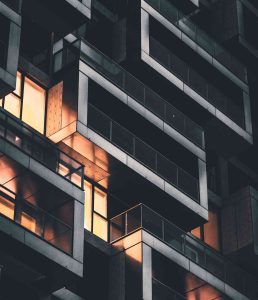Urban photography is more than just tall buildings and neon lights—it’s about capturing the energy, texture, and geometry of a living city. Whether you’re working with a mirrorless camera, a drone, or even your smartphone, high-rise and cityscape shots offer endless creative opportunities. But city environments can also be visually chaotic, making intentionality and planning key to great results.

1. Understand the Three Layers of Urban Composition
| Layer |
What to Include |
Why It Matters |
|---|---|---|
|
Foreground |
Rooftops, balconies, traffic, people |
Adds depth and context |
|
Midground |
Key buildings, streetscapes, signage |
Anchors the viewer |
|
Background |
Skylines, distant towers, the sky |
Creates mood and scale |
Balance is crucial. Use natural lines—roads, rails, and rivers—to guide the eye through these layers and help your viewer travel through the frame.
2. Timing Is Everything: Light and the City
Cities transform dramatically depending on the time of day. Here’s a quick cheat sheet for the best light:
|
Time of Day |
Characteristics |
Best For |
|---|---|---|
|
Golden Hour |
Soft, directional, warm |
Building edges, skyline glow |
|
Blue Hour |
Cool tones, moody, balanced lights |
Long exposures, atmosphere |
|
Night |
High contrast, neon, artificial lights |
Light trails, signage, urban life |
|
Overcast Midday |
Soft shadows, flat light |
Architectural detail, symmetry |
If you’re photographing high-rises from below, golden hour is your friend. The light reflects beautifully off glass and steel while giving the streets a warm wash.
3. Go Vertical (or Horizontal) with Intention
City scenes are often shot in portrait to emphasize height—or landscape to stretch out a skyline. Don’t just default to one. Ask yourself:
- Are you trying to emphasize the scale of a tower? Go portrait.
- Are you telling a story about urban sprawl or a dramatic skyline? Go landscape.
Bonus tip: Don’t forget to turn the camera! Try both orientations and see how it changes the story.
4. Gear Considerations for Urban Work
|
Gear |
Why It’s Useful |
|---|---|
|
Wide-angle lens (10–24mm) |
Captures dramatic scale, narrow spaces |
|
Tripod |
Stabilizes for long exposures, especially at night |
|
Polarizing filter |
Reduces reflections on glass |
|
Drone (where legal) |
Offers new perspectives from above |
|
ND filter |
Enables motion blur on crowds or traffic |
Even a basic kit can go a long way—what matters more is how you frame the moment.
5. Look for Storytelling Moments
Architecture alone doesn’t make a compelling image—people, movement, and details do. Look for commuters under a tower, reflections in puddles, or light streaming between buildings. Add human elements to bring your photos to life.
Urban photography rewards patience, planning, and curiosity. Each city tells a different story—your job is to frame it in a way no one else has seen.



